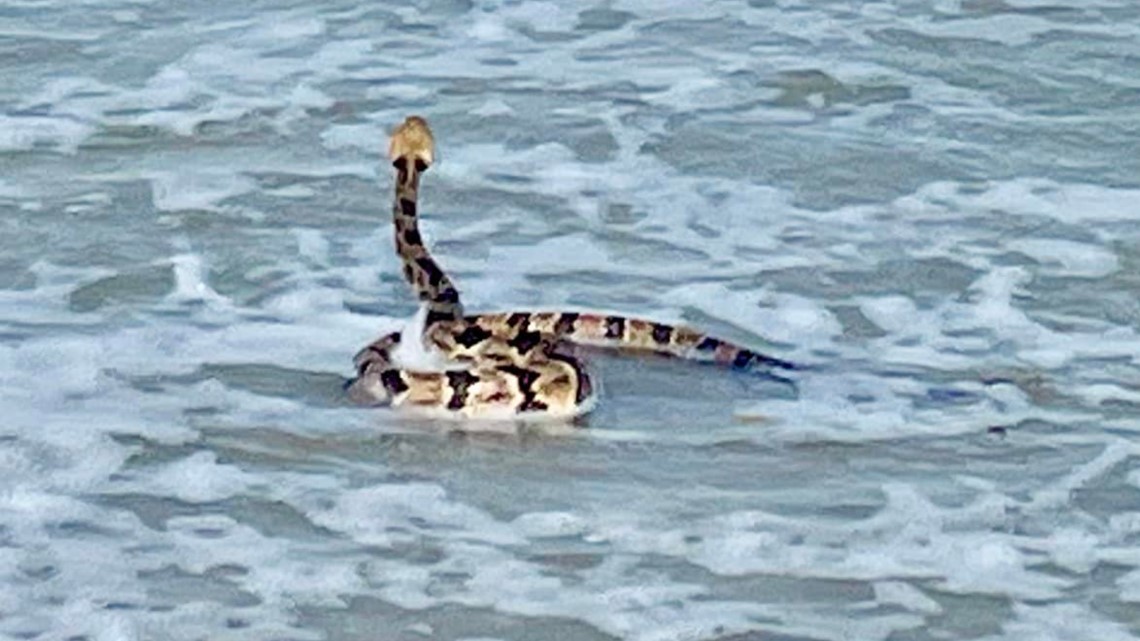Introduction
Imagine basking under the warm South Carolina sun, the salty breeze from the Atlantic Ocean ruffling your hair, and the thrill of adventure in the air. Myrtle Beach, a popular vacation destination, isn’t just known for its beautiful beaches and vibrant nightlife; it’s also home to a variety of fascinating wildlife, including snakes. Whether you’re a nature lover, a wildlife photographer, or just curious about the local ecosystem, this comprehensive guide will help you navigate the world of snakes in Myrtle Beach.
Understanding the Snakes of Myrtle Beach
With over 30 species of snakes recorded in South Carolina, Myrtle Beach hosts several unique and intriguing species. Some are harmless, while others are venomous. Here, we’ll dive into the types of snakes you might encounter during your visit.
Common Non-Venomous Snakes
- Eastern Garter Snake: Often found in gardens and wooded areas, this snake is known for its distinctive stripes.
- Black Rat Snake: A master climber, this snake is frequently spotted in trees and is non-threatening unless cornered.
- Racer: A fast-moving snake that can often be seen darting across roads or open fields.
Venomous Snakes to Be Aware Of
- Eastern Diamondback Rattlesnake: The largest rattlesnake species in North America, recognizable by its diamond-patterned back.
- Carolina Copperhead: A common venomous snake in the area, it has a distinctive hourglass pattern along its body.
- Pygmy Rattlesnake: Smaller but just as dangerous, this snake often goes unnoticed due to its cryptic coloration.
My Personal Encounter with Snakes in Myrtle Beach
During my last visit to Myrtle Beach, I decided to take a guided nature walk at the nearby Huntington Beach State Park. Our guide, a local wildlife expert, shared fascinating stories about the snakes of the region. One afternoon, we spotted a graceful Eastern Garter Snake slithering through the underbrush, its colors sparkling in the sun. It was a brief but thrilling moment, a direct connection with nature that reminded me of the beauty and diversity of wildlife in this area.

Safety Tips for Encountering Snakes
While snakes can be fascinating, it’s essential to prioritize safety during your encounters. Here are some practical tips:
- Stay Calm: If you see a snake, try to remain calm. Most snakes are not aggressive and will retreat if left alone.
- Keep Your Distance: Observe snakes from a distance and avoid trying to touch or capture them.
- Wear Proper Footwear: When hiking in dense underbrush or tall grass, wear sturdy shoes to protect your feet.
- Stay on Trails: Stick to marked paths and avoid venturing into areas of tall grass or heavy brush.
Comparing Snake Species in Myrtle Beach
| Snake Species | Venomous | Common Locations | Length |
|---|---|---|---|
| Eastern Garter Snake | No | Gardens, wetlands | 2-3 feet |
| Black Rat Snake | No | Forests, farmlands | 4-6 feet |
| Eastern Diamondback Rattlesnake | Yes | Coastal regions | 3-6 feet |
| Carolina Copperhead | Yes | Woodlands, wetlands | 2-3 feet |

Destination Highlights: Exploring Myrtle Beach
Top Attractions near Myrtle Beach
While snakes are an intriguing aspect of your Myrtle Beach adventure, the region offers plenty of other activities to enjoy:
- Myrtle Beach State Park: This beautiful park offers scenic trails and is a great spot for wildlife watching.
- Ripley’s Aquarium: A family-friendly attraction that showcases marine life and educates visitors about ocean habitats.
- The Carolina Opry: The perfect evening entertainment option with a variety of music and comedy shows.
Exploring Flora and Fauna at Huntington Beach State Park
As mentioned, Huntington Beach State Park is a must-visit for wildlife enthusiasts. With its diverse ecosystems, the park is home to many species of birds, plants, and yes, snakes! Take a leisurely stroll along the trails while keeping an eye out for these fascinating reptiles.

Tips for Wildlife Photography: Capturing Myrtle Beach’s Snakes
If you’re interested in documenting your encounters, here are some tips for snake photography:
Essential Equipment
- Camera: Use a DSLR or mirrorless camera for high-quality images.
- Telephoto Lens: This will allow you to capture close-ups without disturbing the snake.
Timing Is Key
Snakes are often more active during the early morning or late afternoon. Plan your outings around these times for the best chances of spotting them.

Pros and Cons of Exploring Snakes in Myrtle Beach
Pros
- Unique wildlife encounters
- Educational experiences about local ecosystems
- Beautiful scenic locations to explore
Cons
- Potential risk of encountering venomous snakes
- Need for awareness and safety precautions
- Limited visibility in dense vegetation

Frequently Asked Questions about Snakes in Myrtle Beach
Are there any dangerous snakes in Myrtle Beach?
Yes, there are several venomous snakes, including the Eastern Diamondback Rattlesnake and the Carolina Copperhead. However, they are generally not aggressive and will avoid human contact if given the chance.
What should I do if I encounter a snake?
If you come across a snake, remain calm, back away slowly, and do not attempt to handle it. Most snakes prefer to flee rather than confront humans.

When is the best time to see snakes in Myrtle Beach?
Snakes are most active during warmer months and are often seen in the early morning or late afternoon. Spring and summer are ideal times for sightings.
Conclusion
The world of snakes in Myrtle Beach is a captivating one, offering insights into a unique ecosystem filled with both marvels and mysteries. With proper precautions, you can enjoy the thrill of encountering these magnificent creatures while exploring the natural beauty of the area. Next time you find yourself in Myrtle Beach, take a moment to look closely—you might just spot a snake!